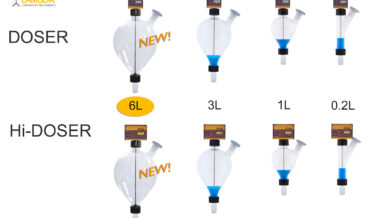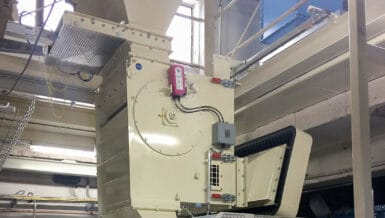The system electronically balances tare weight so the controller senses only the weight of the material in the supply hopper.
At time zero, the hopper is full (high weight), and the operator enters the set point or desired feed rate into the controller.
As time and discharge advance, the actual sensed “loss in weight” follows the decreasing scheduled weight ramp whose slope is a direct representation of the desired weight of delivered material per unit of time (setpoint). The controller makes frequent comparisons of sensed vs. the desired rate and alters the feeder’s output, keeping it at the set point.
Once the sensed weight reaches the hopper refill level (low weight), the controller locks the feed system into volumetric control. The hopper is recharged, and the loss in the weight cycle repeats.
The controller rate disturbance mode protects against any outside weight disturbance that might cause an upset and provides the unique ability to manually load the hopper at any time without disturbing the feed process
Accurately Weigh Grams per Hour to Tons per Minute Vibra Screw, Inc, a leader in solids processing and solids handling solutions, offers a versatile line of continuous and batch Loss-In-Weight Feeders that provide accuracies of ± ¼% to1/2% from ounces to tons, feeding materials from liquids and fine powders to fibrous or flaky materials. Feeders are unconditionally guaranteed to perform in the service for which they are sold.









































